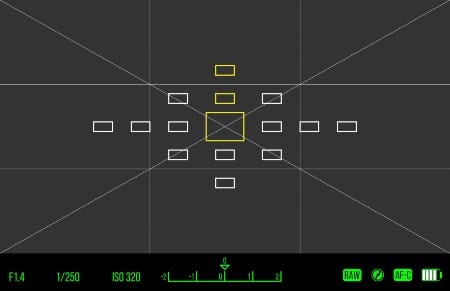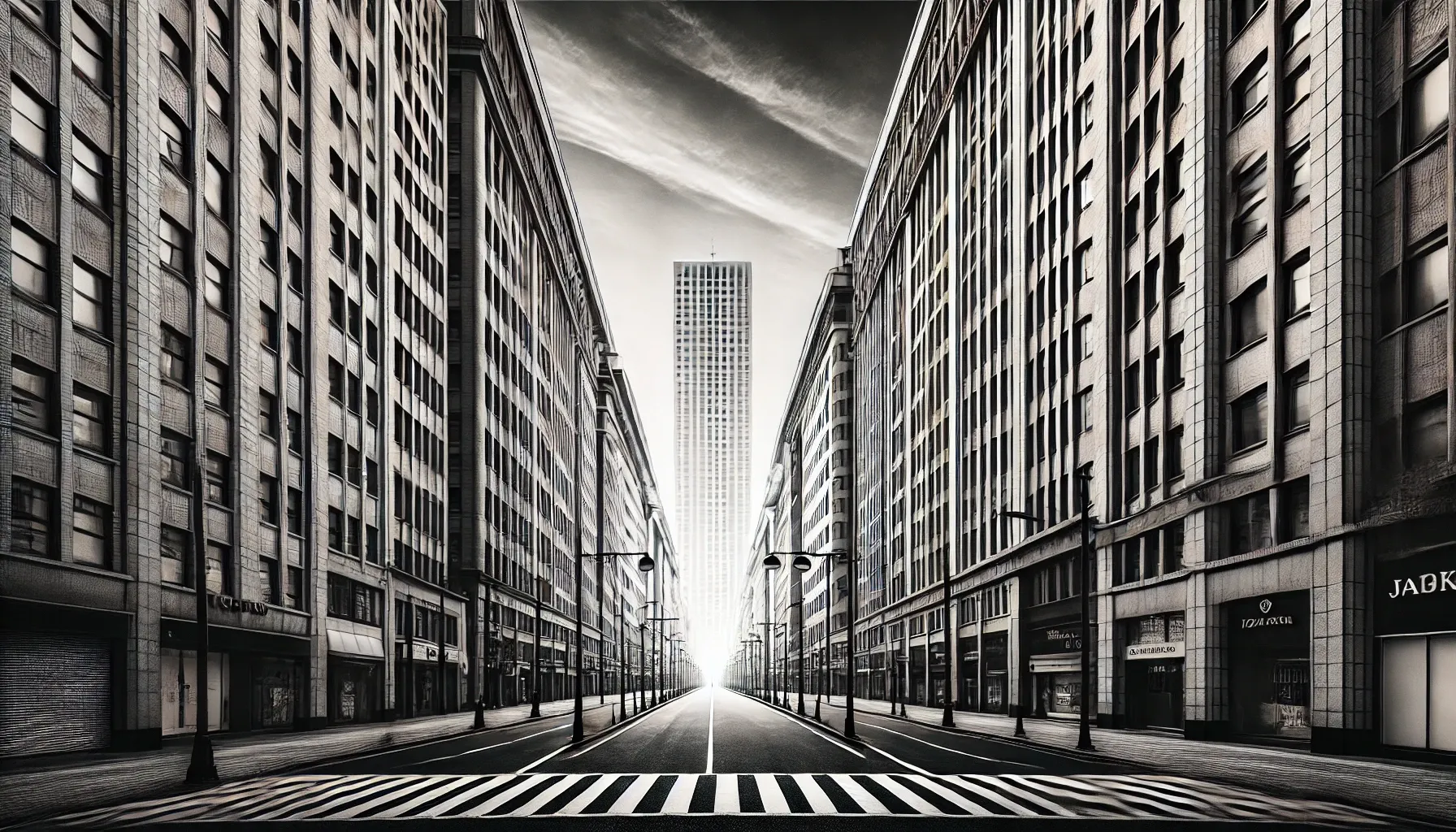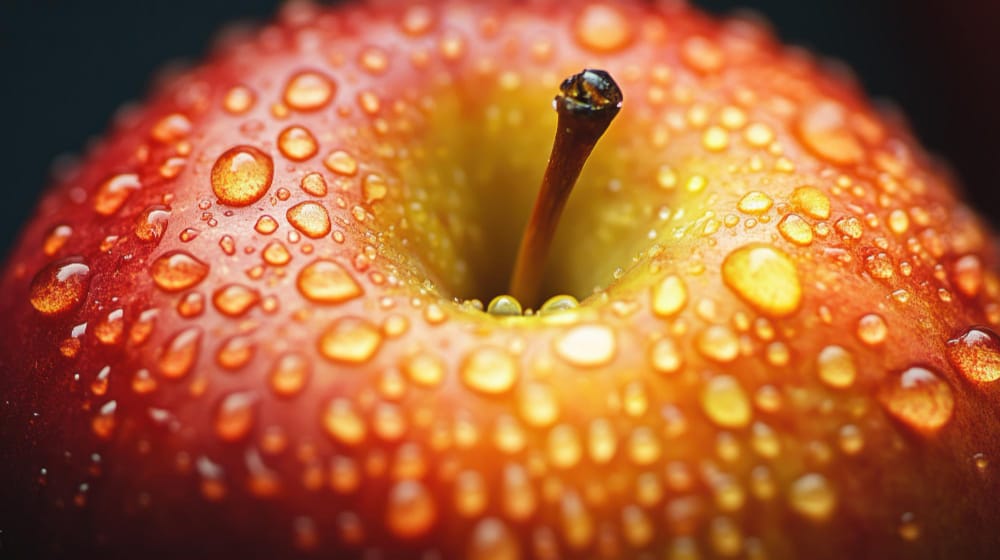Introduction
Composition is one of the most essential elements in photography. No matter how advanced your camera is or how stunning the subject may be, without a strong composition, a photograph can fall flat. The way you arrange the elements within the frame determines how your viewer interacts with your image, guiding their eyes and evoking emotions. Whether you’re capturing a serene landscape or an intimate portrait, a well-composed photograph tells a more compelling visual story.
For many photographers, understanding and mastering the rules of composition in photography is a critical step in improving their craft. These guidelines serve as foundational tools, helping you make conscious decisions about how to position subjects, utilize space, and control the viewer’s focus. While these rules are not rigid laws, they offer structure and insight, helping both beginners and experienced photographers alike create more balanced and aesthetically pleasing images.
In this post, we’ll explore the top 10 rules of composition that will elevate your photography to the next level. From the timeless Rule of Thirds to techniques like framing and leading lines, these principles can transform the way you approach every shot. And once you’ve mastered them, you’ll be better equipped to break the rules and find your unique style.
1. Rule of Thirds
Explanation
The Rule of Thirds is one of the most well-known and widely applied guidelines in the rules of composition in photography. It involves dividing your image into nine equal parts by placing two horizontal and two vertical lines across the frame, forming a grid. The idea is to position the most important elements of your photograph along these lines or at the points where they intersect. This off-center placement creates a more dynamic and interesting composition compared to simply centering your subject.

Why It Works
The Rule of Thirds works because it encourages a natural balance in the image. Human eyes are naturally drawn to these intersections, so placing the key elements here makes the photo more engaging. Centering a subject can sometimes make a photograph feel static or flat, but by shifting the subject slightly to one side, you introduce a sense of motion, energy, and interest.
This technique also helps create a harmonious relationship between the subject and its surroundings, allowing space for the background or other elements in the frame to complement the main subject without overwhelming it.
Example
For example, in landscape photography, you can place the horizon along the lower or upper third of the frame instead of the center, creating more emphasis on either the sky or the land. In portrait photography, positioning the subject's eyes along one of the upper third lines tends to create a more pleasing and natural look. Mastering the Rule of Thirds gives you the foundation to structure your shots thoughtfully and can significantly improve the visual appeal of your images.
2. Leading Lines
Explanation
Leading lines are a powerful compositional tool that guides the viewer’s eye through an image, usually towards the main subject or focal point. These lines can be anything within the scene, such as roads, rivers, fences, or even the edges of buildings. The key is to identify natural or artificial lines in your composition that direct attention in a specific direction. Whether they are straight, diagonal, curved, or converging, leading lines help create a visual pathway for the viewer to follow.

Why It Works
The use of leading lines works because it adds structure to the image and helps organize the composition. Our eyes instinctively follow lines, and using them to direct the viewer's gaze creates a sense of depth and perspective. This technique not only leads the viewer to the focal point but also adds movement and flow to the image, making it feel more dynamic. The result is a more engaging photograph that encourages viewers to explore the entire scene rather than just glance at it.
Incorporating leading lines into your photography is especially useful in genres like landscape, architectural, and street photography, where you can find a variety of lines in the environment that naturally direct attention.
Example
Consider a landscape shot where a winding path leads through a forest, drawing the viewer's eye from the foreground to a distant mountain. In architectural photography, the lines of a building can guide the viewer towards a particular feature, like an interesting window or a doorway. By mastering this principle from the rules of composition in photography, you can create stronger, more compelling images that keep the viewer engaged and focused on the story you want to tell.
3. Symmetry and Patterns
Explanation
Symmetry and patterns are visually pleasing elements that can be used to create stunning compositions in photography. Symmetry refers to balanced proportions in an image, where one side mirrors the other, either horizontally or vertically. Patterns, on the other hand, are repeating elements that can occur naturally or artificially, such as rows of trees, tiles, or architectural features. By capturing symmetry or patterns, photographers can create a sense of harmony, order, and rhythm within their images, making them more aesthetically appealing.

Why It Works
Symmetry and patterns work so well because the human brain is wired to recognize and be drawn to balance and repetition. Symmetry can create a calming, organized feel, while patterns add a sense of rhythm or flow to the composition. When used creatively, these elements can be powerful tools to capture the viewer's attention and evoke emotions of peace, beauty, or intrigue. Symmetry is often used in architectural photography, portraits, and nature shots, where balance is key, while patterns can add a sense of texture or structure to the frame.
Both of these techniques are essential tools in the rules of composition in photography, allowing photographers to highlight uniformity in a scene or emphasize differences by breaking the symmetry or pattern.
Example
In portrait photography, centering a subject within a perfectly symmetrical background, such as a doorway or a reflective surface, can create a powerful image. In landscape photography, capturing repetitive elements, like the lines of a plowed field or the repetition of waves on a shoreline, adds a mesmerizing quality to the photograph. By experimenting with symmetry and patterns, you can create images that are both striking and balanced, keeping the viewer’s interest and making a lasting impression.
4. Framing
Explanation
Framing is a technique in photography where you use elements within the scene to create a "frame" around your subject. This could be anything from natural objects like trees and branches to man-made structures such as windows, doorways, or arches. The key is to position these elements in a way that surrounds or highlights the main subject, drawing the viewer's eye toward it. Framing not only helps emphasize the subject but also adds a sense of depth and layers to the image, making it more visually engaging.

Why It Works
Framing works so effectively because it focuses the viewer's attention, isolating the subject and making it stand out from the background. By directing the eye to a specific area of the image, framing adds a level of storytelling to the photograph, giving context and enhancing the narrative. It also introduces a sense of dimension, making the image feel more three-dimensional. In many cases, framing can also give the photograph a voyeuristic quality, as if the viewer is peering into a scene through a window or doorway.
This technique is particularly useful in the rules of composition in photography as it can transform an ordinary scene into something much more dynamic and intriguing. When executed thoughtfully, framing can turn the surrounding environment into part of the story.
Example
A classic example of framing is using an archway to surround a subject standing in the distance, guiding the viewer's eye directly to the person. In landscape photography, tree branches can be used to form a natural frame around a distant mountain or lake. In street photography, shooting through a window or doorway can create a sense of depth and intimacy. By creatively using framing, photographers can lead the viewer into the image and create a more immersive experience.
5. Depth of Field (Focus)
Explanation
Depth of field refers to the area of an image that appears sharp and in focus. In photography, controlling the depth of field allows you to emphasize specific parts of the scene while de-emphasizing others. A shallow depth of field means that only a small portion of the image, usually the subject, is in sharp focus, while the background and foreground are blurred. This technique is often used in portraits and macro photography to isolate the subject. On the other hand, a deep depth of field keeps most of the image in focus, making it ideal for landscapes or architectural shots where you want everything, from foreground to background, to be sharp.

Why It Works
Manipulating depth of field works because it gives the photographer control over where the viewer’s attention is directed. A shallow depth of field creates separation between the subject and the background, making the subject stand out more clearly. It also reduces distractions by blurring out unnecessary details, allowing the viewer to focus on what matters most. Conversely, a deep depth of field ensures that all elements within the frame contribute to the story or scene, providing context and a sense of completeness. This interplay of sharpness and blur can also add a sense of depth, making two-dimensional photographs appear more three-dimensional.
In the rules of composition in photography, depth of field is an essential technique that helps you create a visual hierarchy and emphasize the subject. It enhances storytelling by selectively highlighting what’s important and minimizing distractions.
Example
In portrait photography, using a shallow depth of field allows you to focus on the subject’s face while blurring out a distracting background. This creates a clean, professional look. In contrast, when shooting a landscape, a deep depth of field can capture every detail of a scene, from the close-up rocks in the foreground to the distant mountains on the horizon. Understanding how to control depth of field can dramatically improve the focus and impact of your photos.
6. Balance and Weight
Explanation
Balance in photography refers to the distribution of visual weight within an image. Visual weight is the perceived “heaviness” or “lightness” of objects in a composition based on factors like size, color, brightness, and positioning. A well-balanced photo gives a sense of harmony and stability, while an imbalanced one may feel awkward or unsettling—though imbalance can also be used deliberately to create tension. There are two main types of balance: symmetrical and asymmetrical. Symmetrical balance occurs when both sides of the image mirror each other in terms of subject placement, while asymmetrical balance uses contrasting elements to create equilibrium without being identical.
Why It Works
Balance works because it makes the photograph feel more coherent and easier for the viewer to process. When an image is balanced, the viewer’s eye naturally moves through the frame without being distracted or thrown off by disproportionate elements. Symmetrical balance often creates a sense of calm and order, while asymmetrical balance can be more dynamic, offering contrast and interest. Either type of balance can help to emphasize the subject by making sure that the secondary elements in the frame don’t overpower it. In the rules of composition in photography, balance is a key principle to ensure that all elements in the frame contribute to the image’s overall effectiveness.
Example
In a portrait, you might balance a large subject on one side of the frame with a smaller object or element on the opposite side, creating visual harmony. In landscape photography, balancing a large mountain with a cluster of trees or a body of water can help to spread the viewer’s attention across the entire scene. By carefully balancing the visual weight of elements, photographers can guide the viewer’s eye while maintaining a pleasing composition.
7. Use of Space
Explanation
The use of space in photography refers to how you utilize both positive space (the subject or elements within the frame) and negative space (the empty or less busy areas surrounding the subject). Negative space doesn’t have to be blank or featureless—it can be the sky, a plain wall, or a wide-open landscape. The key is that it provides breathing room around the subject, helping to emphasize the focal point without overwhelming the viewer. By balancing positive and negative space, you create a more visually appealing composition that guides the viewer’s attention to where it matters most.
Why It Works
Using space effectively works because it helps simplify the composition and draws focus directly to the subject. By incorporating negative space, you reduce distractions and create a sense of calm or isolation, which can evoke emotions or set a particular mood. This technique is particularly useful in minimalist photography, where the subject is often surrounded by vast amounts of empty space, but it can be applied to any genre. The contrast between positive and negative space also adds a sense of balance, even in more complex scenes. Within the rules of composition in photography, mastering the use of space allows photographers to create images that feel intentional, uncluttered, and focused.
Example
A classic example is a portrait where the subject is placed to one side of the frame, leaving a large amount of negative space in the background. This technique not only isolates the subject but also creates a sense of scale or openness. In landscape photography, negative space could be a vast, empty sky above a mountain range, providing a sense of grandeur and simplicity. The use of space can elevate an image, giving it a more polished, professional look while enhancing the emotional impact.
8. Fill the Frame
Explanation
Filling the frame is a technique where the subject occupies most or all of the available space within the composition, leaving little or no room for background elements. By getting closer to the subject or using a zoom lens, photographers eliminate distractions and focus entirely on the details of the subject. This method can create a more intimate, impactful image that immediately grabs the viewer’s attention. It is especially effective in portrait photography, macro photography, and product photography, where the goal is to highlight fine details or emphasize the subject’s texture, expression, or form.

Why It Works
Filling the frame works because it emphasizes the subject and creates a sense of immediacy. By removing extraneous details, the viewer's eye is drawn directly to the subject without distractions. This technique also adds intensity to the image by bringing the viewer closer to the action or the emotions being conveyed. Moreover, filling the frame can be used to create a sense of scale or drama, particularly when shooting objects or scenes that might otherwise seem ordinary. In the rules of composition in photography, this approach helps to create clean, straightforward images that are visually powerful and engaging.
Example
In portrait photography, filling the frame with the subject’s face ensures that the viewer’s focus is on the facial expressions, capturing emotions in a more compelling way. In macro photography, filling the frame with a flower or insect allows the intricate details and textures to dominate the image, making for a captivating shot. For street photography, filling the frame with a bustling scene can also convey a sense of energy and movement. This technique is versatile and effective in directing the viewer’s attention exactly where you want it, making the image feel more dynamic and focused.
9. Golden Ratio
Explanation
The Golden Ratio is a compositional guideline that has been used in art and design for centuries, often seen as a more advanced and natural alternative to the Rule of Thirds. It is based on a mathematical ratio of approximately 1.618:1, and when applied to photography, it creates a spiral or grid that helps determine the placement of elements within a frame. The idea is to position key subjects along this spiral or within sections of the grid, which leads to a more organic and aesthetically pleasing balance in the image. The Golden Ratio can be found in nature, art, and architecture, which is why it feels so naturally appealing in compositions.

Why It Works
The Golden Ratio works because it follows a natural order that the human eye finds inherently attractive. It creates harmony in the image by positioning elements in a way that feels both balanced and dynamic. Unlike the Rule of Thirds, which divides the frame into equal parts, the Golden Ratio gives a more fluid, less rigid structure to the composition, leading the viewer’s eye through the image more naturally. It’s especially effective when you want to create a sense of movement or flow in the image. As part of the rules of composition in photography, mastering the Golden Ratio can help photographers create well-proportioned and visually pleasing images that resonate more deeply with viewers.
Example
In landscape photography, you can use the Golden Ratio to place the horizon or main elements of the scene along the curve of the spiral, leading the viewer’s eye from the foreground to the background in a fluid motion. In portrait photography, you might position the subject’s eyes or face at one of the key points of the spiral, ensuring the viewer’s attention is naturally drawn to it. By using the Golden Ratio, you can create a more harmonious and visually impactful composition that feels balanced and intentional.
10. Break the Rules
Explanation
Once you've mastered the foundational rules of composition in photography, it's important to understand that these rules are not set in stone. In fact, some of the most iconic and striking images come from intentionally breaking the rules. Photography is a creative art form, and strict adherence to rules can sometimes limit artistic expression. Breaking the rules allows you to explore new perspectives, challenge conventional thinking, and bring out a unique style that sets your work apart. The key is to break the rules with intention, knowing why the rule exists and how deviating from it can enhance the impact of your image.
Why It Works
Breaking the rules works because it introduces unpredictability and can evoke a strong emotional response. For example, while the Rule of Thirds suggests off-center subjects for balance, deliberately centering your subject can create a powerful, symmetrical composition that feels bold and direct. Similarly, while filling the frame can help isolate the subject, leaving significant empty space can convey a sense of loneliness or vastness. When done deliberately, these deviations can make the viewer pause and engage more deeply with the image.
This approach also opens up endless creative possibilities. By challenging the established norms, you can inject your personality into your photography and create images that feel fresh, innovative, and memorable. In the broader context of the rules of composition in photography, breaking the rules is about knowing when a more unconventional approach will serve your artistic vision better than traditional techniques.
Example
Imagine a landscape photograph where the horizon line is placed at the extreme upper or lower edge of the frame, creating a sense of imbalance that draws attention to the sky or ground. Or consider a portrait where the subject is intentionally cropped in a way that breaks traditional framing conventions, leading to a more intimate or abstract result. Breaking the rules can yield surprising, impactful results that make your photography stand out.
Conclusion
Mastering the rules of composition in photography is key to creating visually engaging and emotionally impactful images. Whether you're using the Rule of Thirds, leading lines, or experimenting with symmetry and patterns, these guidelines provide structure and purpose to your work. However, photography is as much about creativity as it is about technique, and knowing when to break the rules can take your artistry to the next level. By applying these principles thoughtfully, you can direct your viewer’s attention, evoke emotions, and tell compelling visual stories.
As you practice these rules, remember that they are flexible tools meant to enhance, not restrict, your creativity. Experiment with different compositions, challenge conventional norms and find what works best for your unique style. With time and experience, you’ll learn how to balance structure with artistic freedom, creating images that resonate with both yourself and your audience.


